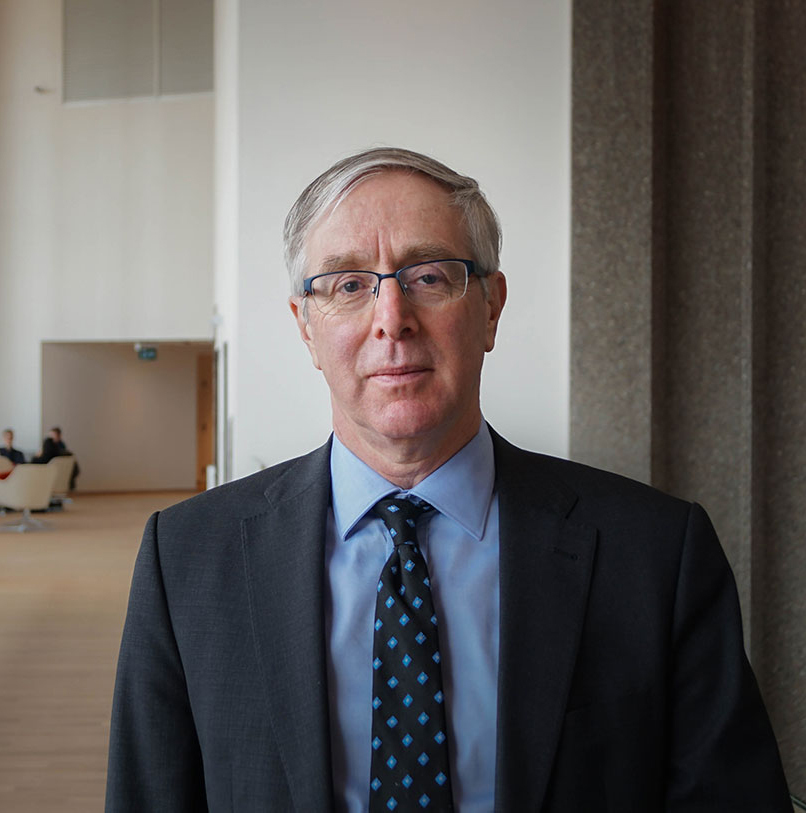Quebec’s government has declared the province an aggressively secular society with the passage of Bill 21 banning the wearing of religious clothing and symbols in certain public service workplaces.
Montreal’s English Speaking Catholic Council (ESCC) has simultaneously taken quiet first steps to restore community as an integral, indeed seamless, part of religious life in the province. ESCC Executive Director Anna Farrow’s great and determined plan is to help the avowedly secular Quebec government recognize its own best interest is in helping with that community re-building.
“It’s not saying ‘well, how can we make parishes more like the government?’ It’s not saying ‘how can we make the government more like the parish?’ It’s saying ‘okay, what are the particular gifts and skills in this faith community, and how can we use them to help people in need in the parish in a way that helps them outside the parish too?’” Farrow says.
Her comments come the day after release of an ESCC survey called “Parishes and Newcomers." The theme of the survey is how people integrate, how they make use of integration and what they do with it.
In late 2018, the Council began e-polling Catholic parishes in Montreal’s English Diocese. Part of the intention was to update knowledge of the demographic makeup of churches. As in every major city in Canada, the face of church life has radically altered over the past 20 years. It’s not just a matter of long-time parishioners either aging or abandoning the pews altogether.
It’s ethnicity. It’s first language. It’s time lived on Canadian soil.
At St. Kevin’s parish in the city’s Côte-des-Neiges neighbourhood, where Cardus Executive Vice-President Ray Pennings spoke at the launch of the survey project last October, upwards of 90 per cent of the congregation are now Filipino in what was once the heart of Irish Catholic Montreal. A similar demographic exists at Jesus Light of the World Church on Montreal’s suburban West Island.
What Farrow and the ESCC recognized, however, was that counting the numbers of newer Canadian faces in a time of profound change was also a golden opportunity to measure wants and needs and experiences of adaptation. In other words, it was a moment to see not only who’s in the pews but how they were forming community, and above all what use they were making of that community.
In the wealth of data the responses generated was the startling affirmation that 67.4 per cent of those answering said they, in fact, turn to the parish for “friendship and community.” Slightly more than 45 per cent said they turned to it for spiritual comfort. It would be a startling contrast, but for the data showing 72 per cent of those who answered were born outside of Canada though 43 per cent of that number have been in this country for 20 years or more. That’s underscored by about 65 per cent describing their entry into their parish “communities” as welcoming and positive.
“I find it so fascinating that friendship and community is the number one thing that people are looking to their parishes for. If that’s the number one response of newcomers, I wouldn’t be surprised if it’s the number one response who’ve lived in Canada all their life. But it’s a very particular sense of community: it’s people looking after each other and (deepening) bonds of fellowship that are there because of our faith,” Farrow says.
It’s an observation that is wholly supported by, and dovetails perfectly with, findings from the Cardus-Angus Reid Institute research released earlier this week showing people in faith communities are less vulnerable to loneliness and social isolation than non-religiously observant Canadians. Those of us who are “religiously active” are less likely to experience isolation. Contrary-wise, those qualified as “desolate” are most likely than others to “never or rarely” attend religious services.
When churches serve as crucibles of community through bonds of faith, Farrow notes, it’s in many ways because they actually meet the practical needs of their membership. For newcomers, basic information gaps on their adopted society can be filled. Everything from employment leads to housing and furniture can be sought after with a relatively high degree of trust. And the church building itself can also serve as a focal point for services.
For example, about 50 per cent of those who engaged in the ESCC survey would like to see their parish provide French language training, perhaps not so surprising when upwards of 85 per cent have English as the most common language used at home, and less than 20 per cent consider themselves fully fluent in French.
But is language instruction properly a Church responsibility, particularly at a time of tight ecclesial resources? Farrow’s answer is to ask: why shouldn’t it be, provided the community itself comes together to make it possible, and thereby further strengthen its own internal bonds as well as its engagement with the wider society?
“I’m sure there are priests out there, and some involved lay people, who would say ‘there are government resources for this; that’s something for the government to take care of.’ But I think we’ve ceded too much of that – to the detriment of both sides. You go to church to fulfill your obligation, or you go to the government office to get your French class or your employment counselling, and you take your ticket, you get your little certificate and then you come out and you’re on your own. How does that build community?” she asks.
Building on its fresh survey data, the English Speaking Catholic Council’s next steps will be mapping out potential pilot projects to help parish communities answer some of the identified needs. Farrow is quick to emphasize neither she nor the Council will run those projects.
“I am not going to go to St. Kevin’s to help them run French language training,” the native of California laughs.
Rather, it might help parishes connect to appropriate funding from federal and provincial agencies with an interest in, say, newcomer integration, language training or employment development. Church and State – or at least parish – then become partners in delivering social goods through the medium of community made vital and effective through common religious faith.
“The idea would be to make the community that’s already there, that’s already meeting needs, a little more deliberate. It would not be to make it bureaucratic, or more work for the priest, or one more parish council meeting to attend. It would be to move beyond the chance conversation with the person you have sitting next to you so that there’s a resource person who can make the connections that need to be made.”
There is already, she adds, a “tentative dance” going on with various government levels to explore church communities as potential vectors of need delivery, though as with everything in Quebec, 101 political delicacies must be respected. It would seem that process just became infinitely more complex with passage of the aggressively secular Bill 21. Au contraire, Farrow says, the timing might actually be a stroke of luck.
“I think the climate is there, interestingly enough despite Bill 21, for certain people within government to be able to see that this is something that is a benefit to the entire community. Yes, in this case, it might be Catholics who would benefit the most directly. But if you have one successful family that gets the kids all the way through high school and gets them placed in jobs, that’s a benefit to the total community.”
And in keeping with that hopeful vision, who knows? By then, the secular triumphalism that produced Bill 21 might have subsided and those kids will even be allowed to wear religious symbols in certain public service workplaces.
Convivium means living together. We welcome your voice to the conversation. Do you know someone who would enjoy this article? Send it to them now. Do you have a response to something we've published? Let us know!






